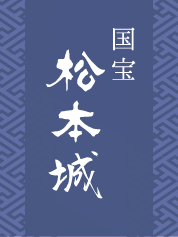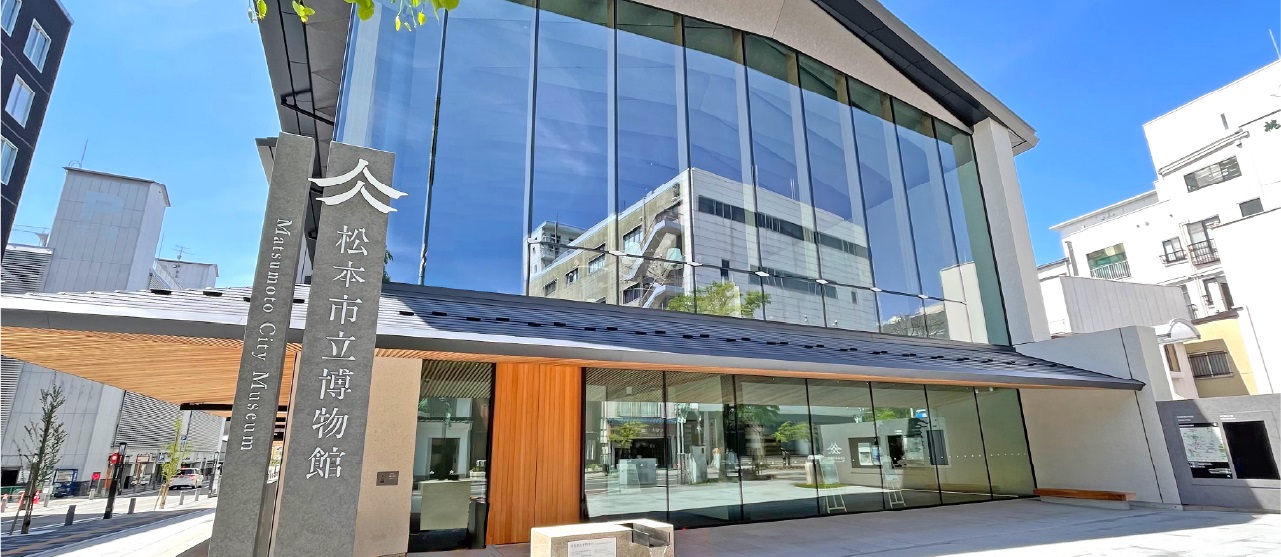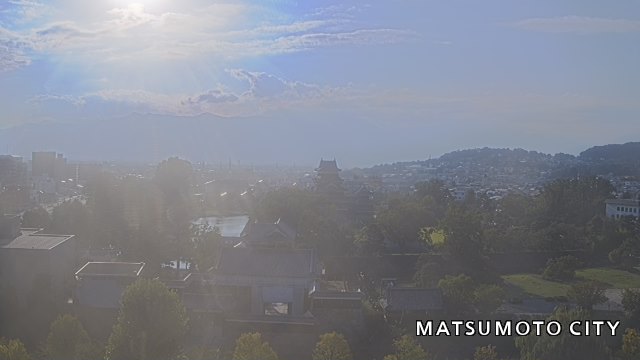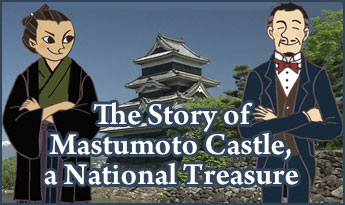Information on tourist attractions and sightseeing spots around Matsumoto
There are many other sightseeing spots around Matsumoto Castle.
Matsumoto is known as the 3 "gaku" city, including music ("ongaku" in Japanese), mountains ("sangaku") and academic study ("gakumon").
There are many tourist facilities and sightseeing spots around the city.

Matsumoto City Museum of Art
It displays a collection of works created by Yayoi Kusama, a famous artist from Matsumoto, as well as other art pieces created by Shinzan Kamijo and Kazuo Tamura. Yayoi Kusama's art piece "Maboroshi no Hana" is displayed outside next to the entrance. In addition to the permanent exhibition, there are a variety of special exhibitions, workshops and lectures.

An Important Cultural Property of Japan: Kaichi School
In Meiji 6 (1873), the school "Chikuma Kengaku" was renamed "The Second Academic Area The First Elementary Kaichi School" which was the elementary school based on the modern school system.
It is now used as an education museum displaying many materials regarding education from the Edo period to the modern age. This western-style school building was designated an Important Cultural Property of Japan in Showa 36 (1961).
Matsumoto City Museum
Matsumoto City Museum opened on September 21, 1906 (Meiji 39) as the "Meiji 37-38 War Memorial Hall." It is a museum with a history of over 100 years since it was established in the boys' department of Matsumoto Elementary School. In 1952 (Showa 27), it became the first museum in Nagano Prefecture to be registered under the Museum Act. It has changed its name and location over the years, and in October 2023 (Reiwa 5), it was relocated to its current location and opened as the core facility of the "Matsumoto Marugoto Museum."
It houses over 110,000 valuable items, including three nationally important tangible folk cultural properties: the Important Cultural Property "Peacock-designed chime," "Tanabata dolls," "Folk belief materials," and "Agricultural tools."
Matsumoto City Timepiece Museum
This museum has an awesome collection of antique clocks, displaying about 110 precious clocks. Most of clocks are still working properly.

Matsumoto City Weighing Scale Museum
The predecessor of this museum was Takeuchido Weighing Scale shop operated as a specialty shop for weighing from Meiji 35 (1902) to Showa 61 (1986).
It houses about 1,300 items and materials regarding "measuring," "scaling" and "weighing" instruments, including balances for money exchange, instrument for sorting out females and males of cocoons, hair hygrometers, the statue of Themis (Lady Justice) and a Roberval balance. There are Mimatsu residential building and its drawing room behind the museum.
Agata no Mori Park and the Old High School Memorial Museum
In Taisho 8 (1919), the Matsumoto High School was established in the place called Agata and produced many talented human resources until it was closed due to the reform of educational system in Japan after the Second World War. It became Shinshu University after the war and the campus was moved to Asahi in Showa 48 (1973). After that, the impressive western-style wooden school building constructed in the Showa era was preserved by the citizen and graduates, and now used as the Agata no Mori Culture Museum.
The Old High School Memorial Museum was located in the park, displaying the old textbooks and notebooks, historic materials such as books, magazines regarding mountains and climbing items.
Asama Hot Springs
Asama Hot Springs has been popular among citizens as the place for entertainment, as it were an inner room of Matsumoto, one of the castle towns in Japan. It is immersed in nature and developed by its history and culture. Escape from your busy life and have a relaxing time with hot springs in Asama gushing out endlessly for more than 1,000 years.

Utsukushigahara Hot Springs
It used to be called "Shiraito no Yu," "Yamanobe no Yu" and "Tsukama no Yu," but was renamed "Utsukushigahara Hot Springs" in Showa 30's (1955-64). It is the traditional hot spring place having a venerable history in a peaceful and relaxed atmosphere.

Kamikochi
Kamikochi is a highland valley at an altitude of approximately 1,500 meters. It is designated a national cultural property (Special Places of Science Beauty and Special Natural Monuments) as a part of Chubu-Sangaku National Park.
It provides the beautiful landscape and nature including Kappa bridge over the Azusa river, spectacular mountains, Taosho and Meijin ponds, and Tokusawa.

















